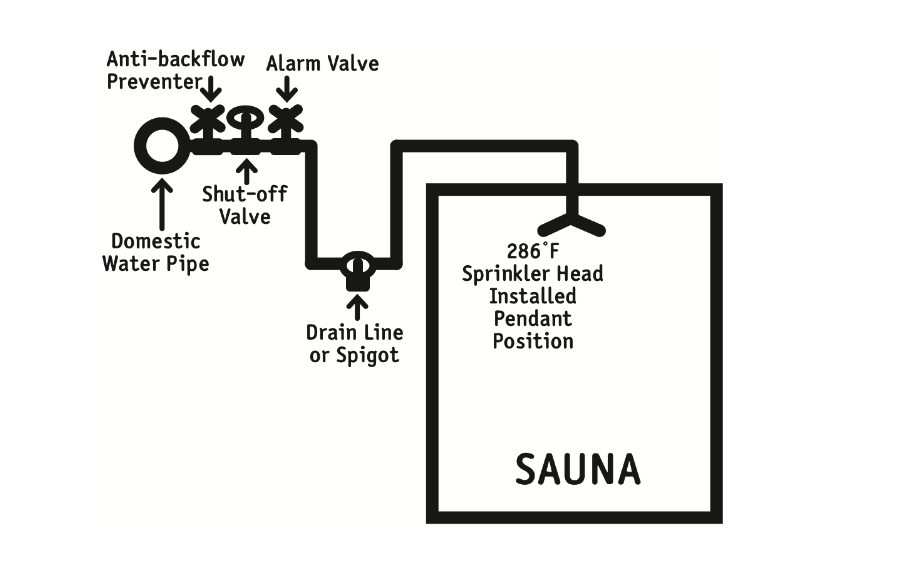Preventing Sauna Fires
Categories:
“In no way, shape or form did I ever feel we would ever use the sauna sprinkler. In fact, my biggest fear was that this thing is going to go off sometime, it’s going to flood the place and there’s not going to be a fire. But little did I know it was going to go off, but in the form of a real fire.”
—Jim McCrudden, CEO, Lakeland Hills YMCA
A sauna fire has the potential to impact your organization in many different ways. Since 2015, Redwoods has seen an increase in the expense of sauna fires. Not only can it be costly, it could also force your organization to close for several months due to damages and smoke. The following information will provide measures your organization can take, like installing sauna sprinklers, to help prevent a disaster from happening.
Causes of sauna fires over the years have included:
- Electrical malfunction
- Drying of clothes or towels over the heating element
- Newspapers or magazines being left in the sauna
- Charring of the wood in the sauna to a point where risk of it catching on fire is increased (pyrolytic decomposition)
The severity of damages has ranged from relatively minor to very major, including closure of facilities. Sauna fires are preventable and there are steps that your organization can take to prevent them from occurring in your facilities. Some measures your organization can take are:
- Establish a locker room monitoring procedure that requires multiple staff members to walk through the locker rooms on a frequent basis (i.e. at least every 30 minutes) to check inside the sauna. Implementing and documenting such a practice will also address several other risk exposures, including potential abuse, theft and guest safety in these areas. Our locker room and sauna monitoring form can be used for documentation. Deck-located saunas should receive similar monitoring.
- Post signs banning newspapers, magazines and other reading materials from the sauna. Additionally, post signs warning against the drying of clothing or towels over the heating elements. If left in the sauna, they have the potential to catch on fire.
- Change can be difficult for both members and staff. Equip your staff to enforce this protocol. Give them guidance on how to talk to a member about the signs. For example, your staff can say, “In order to continue delivering on our mission, we have to keep our doors open. Eliminating dangerous factors in the sauna, such as, newspapers, clothing, etc. will allow us to do just that”.
- Inspect your sauna(s), looking for charring or excessive discoloration of the wood, especially near the heating elements. Replace any charred wood with material meeting manufacturer’s guidelines.
- Wooden components often are too close to the heat source and need to be moved or given additional clearance. Sometimes a heat shield must be installed between the heating element and the wall to adequately protect the wood behind it.
- If you have automatic fire sprinkler protection in your facility, a sprinkler head should have been installed in the sauna(s). If not, you should contact the company that services your system and have the system extended to protect the sauna.
- If your facility doesn’t have automatic fire sprinkler protection, you can implement the following relatively inexpensive alteration:
- Connect to the nearest domestic water line.
- Install a high-temperature fire sprinkler head in the sauna.
- Equip the line extension with a closely-coupled backflow preventer, shutoff valve and central-station water-flow alarm, plus a drain.
- Normally the jurisdiction concerned with such an installation is the health department rather than the fire department: NFPA 13 doesn’t forbid such an installation because of its limited extent, it will not be considered a fire sprinkler system by the fire department.

Pictures from the Field
Below, we’ve included a few photos so you are able to visualize what sauna fire dangers look like.
A charred sauna:

A post-sauna fire in which the sauna had a sprinkler so, the fire was contained:

Inappropriate drying of clothes in a sauna:

